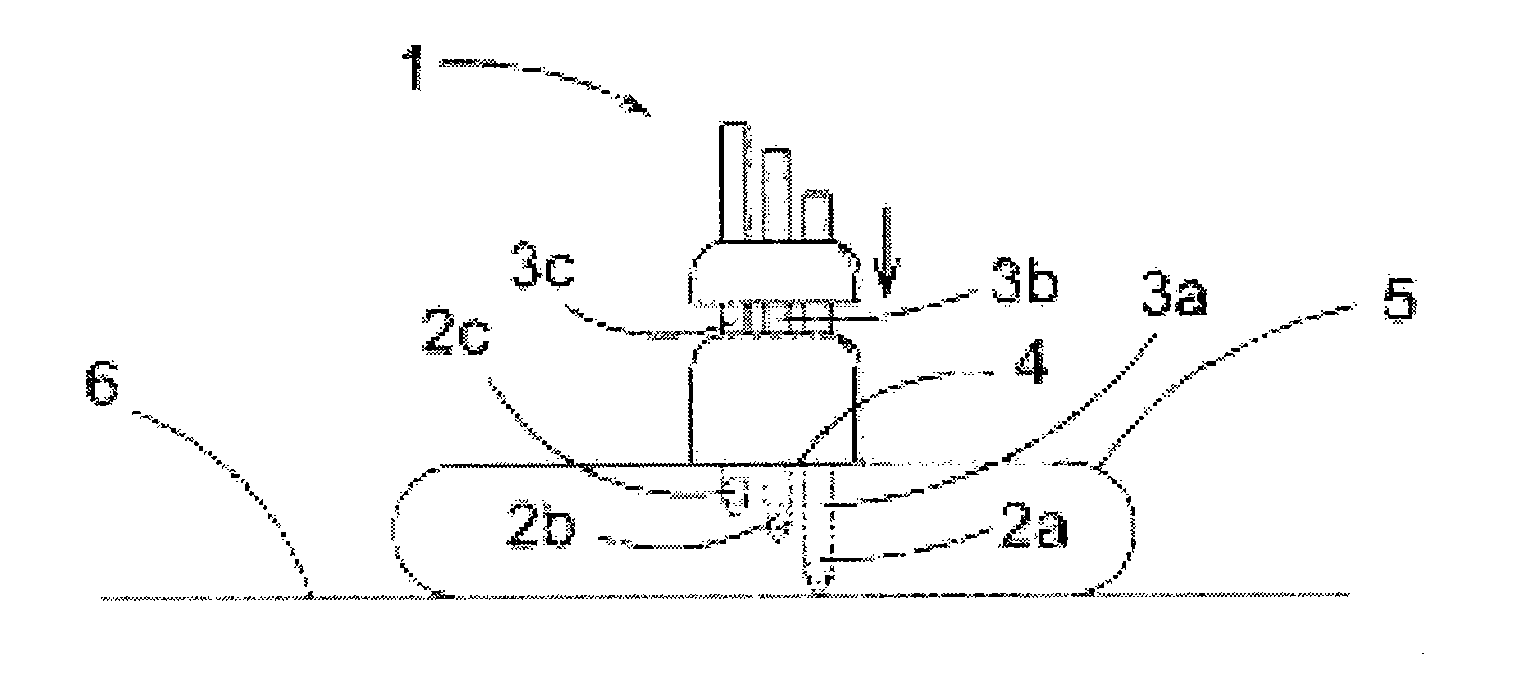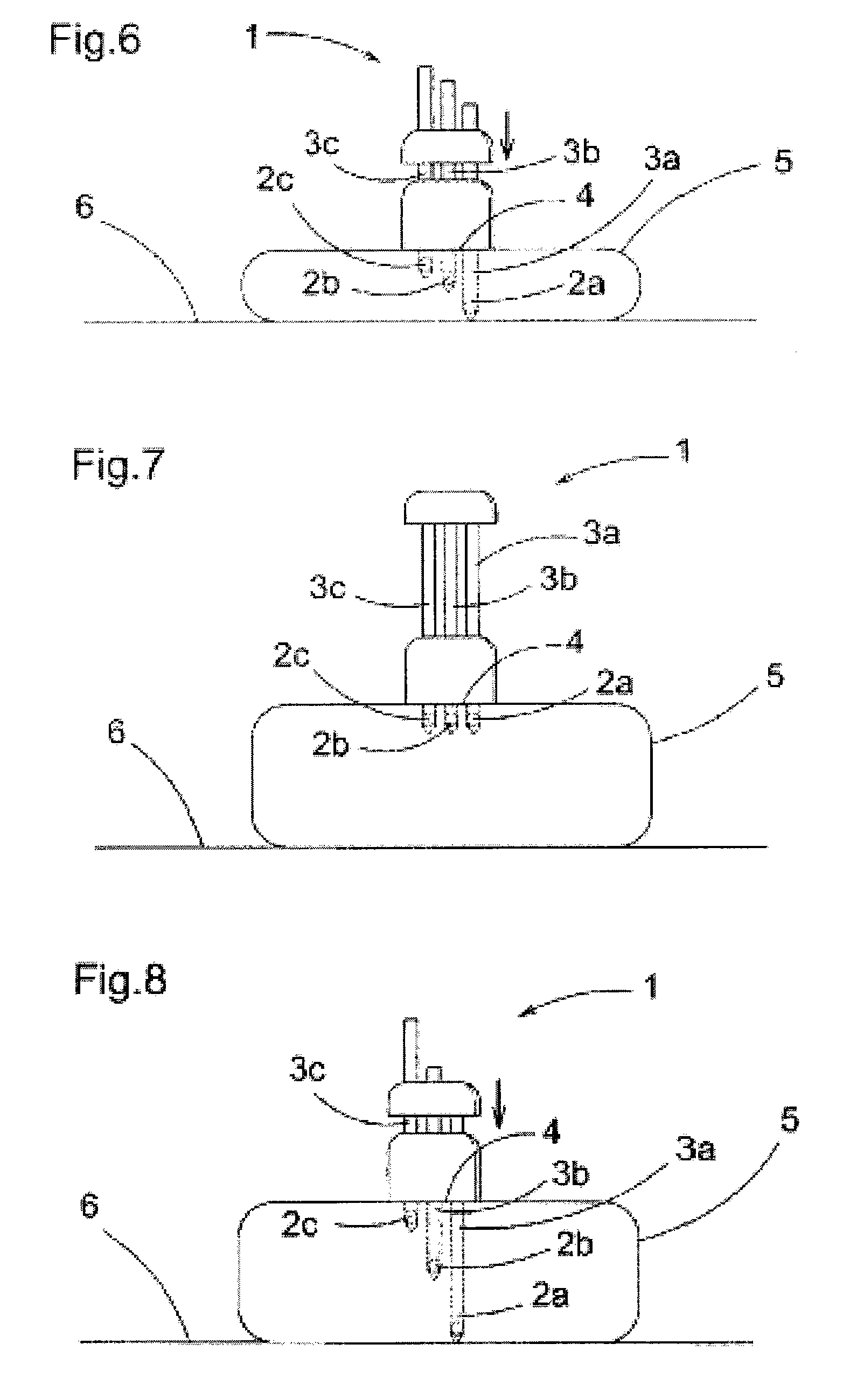Food cooking control method and device
a technology of food cooking and control method, which is applied in the field of food cooking control method and device, can solve the problems of food changing in dimensions during the process, unable to determine the exact position of the device inside the food, and unable to control the energy
- Summary
- Abstract
- Description
- Claims
- Application Information
AI Technical Summary
Benefits of technology
Problems solved by technology
Method used
Image
Examples
Embodiment Construction
[0019]The two patents, U.S. Pat. No. 4,441,693 and EP 1688721 B1, neither teach nor suggest how to place the temperature probe inside the food. Furthermore, they do not take into account the heat gradients and the inertias occurring in the food throughout the cooking process either.
[0020]Neither EP-B1-1688721 nor DE-A-19609116 teach or suggest how to place the temperature probe inside the food in a precise position, in relation to the thickness, and in a repetitive manner. Furthermore, they do not generally take into account the heat gradients and the inertias occurring in the food throughout the cooking process, therefore the control of said process is mostly ineffective.
[0021]In a first aspect, the present invention relates to a food cooking control method comprising the insertion inside a food, for example a piece of meat or fish, supported on a reference surface or cooking surface (e.g. a griddle), of one or more temperature detection devices.
[0022]A basic version of the propose...
PUM
 Login to View More
Login to View More Abstract
Description
Claims
Application Information
 Login to View More
Login to View More - R&D
- Intellectual Property
- Life Sciences
- Materials
- Tech Scout
- Unparalleled Data Quality
- Higher Quality Content
- 60% Fewer Hallucinations
Browse by: Latest US Patents, China's latest patents, Technical Efficacy Thesaurus, Application Domain, Technology Topic, Popular Technical Reports.
© 2025 PatSnap. All rights reserved.Legal|Privacy policy|Modern Slavery Act Transparency Statement|Sitemap|About US| Contact US: help@patsnap.com



